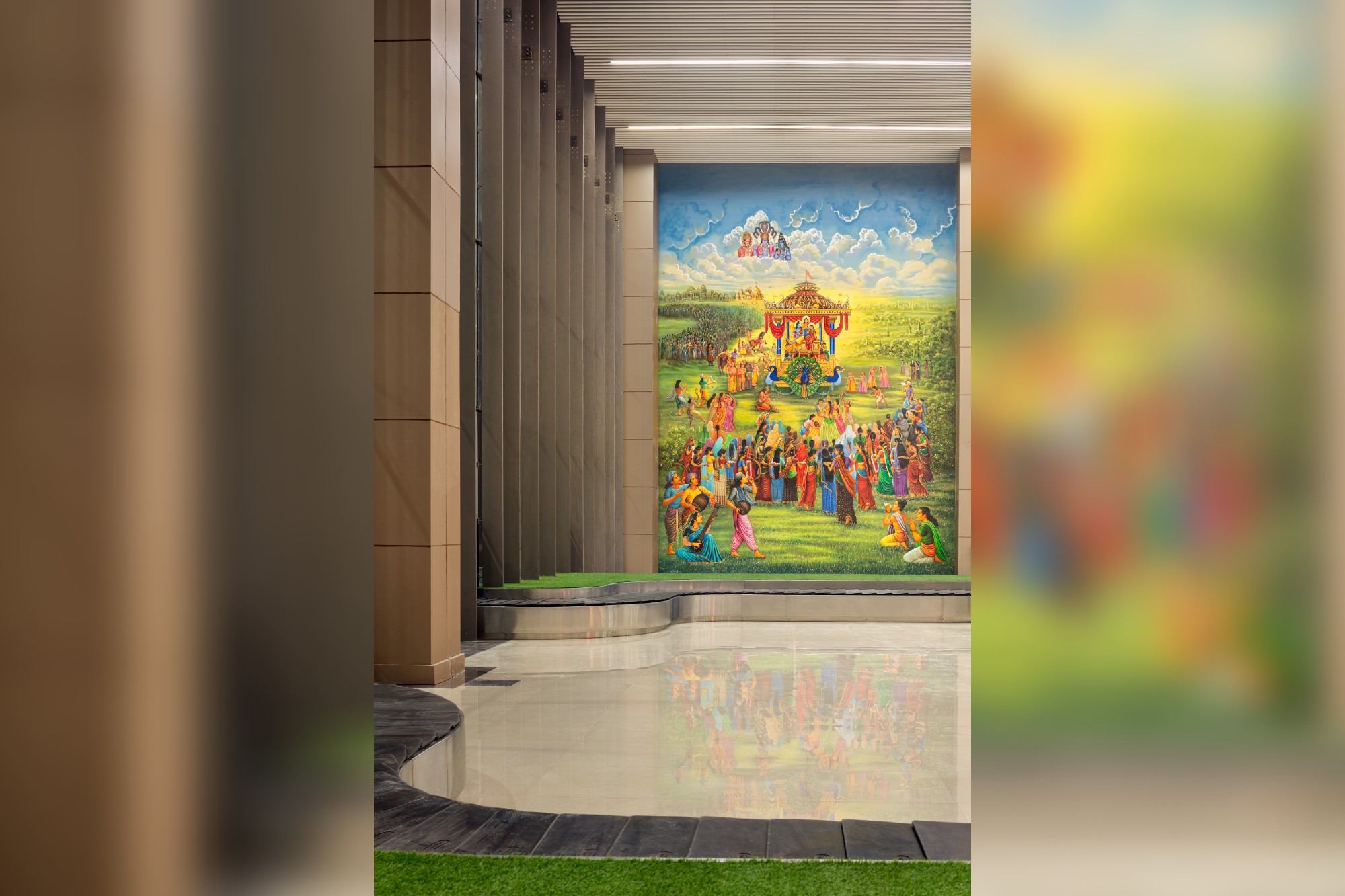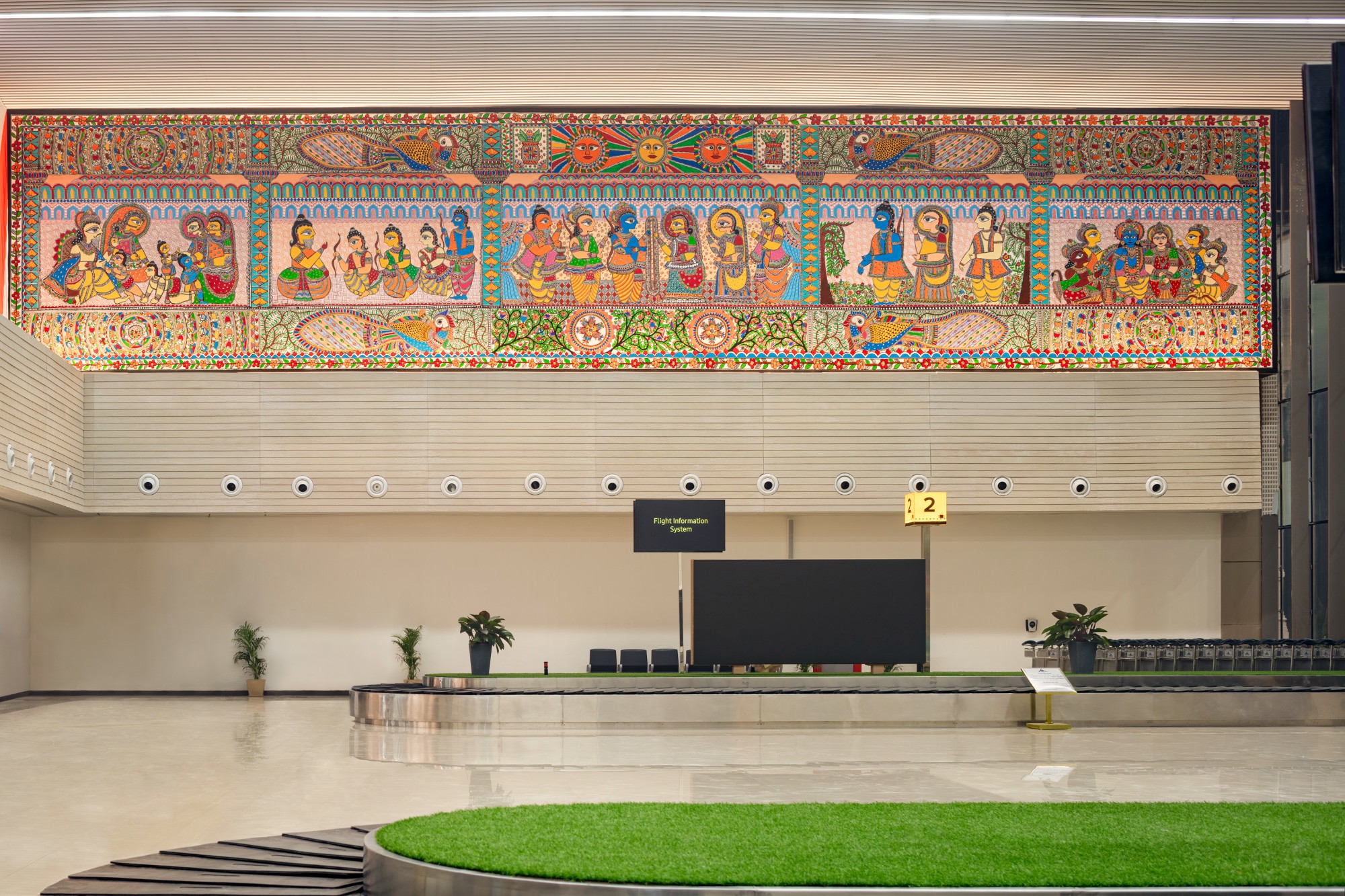Ayodhya airport by Sthapati

The Ayodhya Airport is more than just a feat of modern infrastructure. It promises smooth connections and environmentally friendly policies for the ancient city of Ayodhya.
The recently inaugurated Ayodhya Airport is more than simply a hub for transportation—it’s a real example of the diversity of the country’s cultures. Every aspect of the airport, from its imposing roof to its elaborate columns, has historical and spiritual importance, breaking from the traditional glass box architecture. The architecture of the airport purposefully veers away from simplicity and combines technological innovation with cultural expression and heritage, as well as environmental techniques and mythological legends.

Inspiring a rebirth of regional artistry, it embodies the spirit of India’s colourful past. Through the application of contemporary technology, the airport represents a dedication to sustainability and offers a venue for the flourishing of traditional handicraft. A symbol of cultural revival in contemporary India, it is a tasteful fusion of the old and the new.
A wonder of modern infrastructure, the Ayodhya Airport holds the potential to foster cultural enrichment and comprehensive community development. The airport, despite its small size, is a symbol of India’s dedication to sustainable practices and the start of a new age in ecologically conscious aviation, according to its GRIHA 4-Star Certification.
India has experienced unparalleled expansion in both aviation traffic and infrastructure throughout the past ten years. The most recent destination on this route is Ayodhya Airport. The Ayodhya Airport is a two-story building with elevation components that show the rich heritage of the holy city. Large amenities on the bottom floor entice visitors, while the first story handles airport operations.

The building, which cost INR 250 crore, is modelled after the mandapas’ progressive elevation and the Nagara style of temple architecture that is popular in Northern India. The airport is specifically constructed to enhance the experience of visitors and devotees while honouring the tradition of Ayodhya. It also helps with better connections throughout India.
A massive, brass-adorned stepped shikar stands tall at the Ayodhya Airport’s main entrance. This architectural marvel welcomes travellers with a rich cultural experience, according to the Nagara style as delineated by scriptures. The history and legacy of the city are told through elaborate columns, each rich in symbolic meaning. The enormous columns that hold up the terminal roof represent the Kandas from the Ramayana, incorporating rich cultural elements into the architecture of the airport. The Deva Gana Patta, who represents divine attributes, coexists with the Khandika, who represents impermanence.
Especially at eye level, the ‘Toran dwars’ are very distinct. These elaborately decorated gateways create a symbolic link to the rich heritage of the area while also nodding to legendary motifs.

The terminal building is a powerful communication canvas. The mural of the Bow and Arrow represents the bravery to face falsehood, and the hexagon-shaped light particles represent the unwavering victory of the truth over hierarchy. Beyond conventional airport designs, artworks richly illustrate the ageless story of Lord Ram from the Ramayana, from arrivals to skylights, creating an immersive and sensory experience. Well-positioned skylights provide travellers with a sensory experience in addition to acting as guiding lights and improving wayfinding.
Using environmentally friendly GRC materials to achieve carbon neutrality, the design leads the way in sustainable aviation operations. Crafted with great care and attention to detail using Glass Fibre Reinforced Concrete (GRC), ornamental work replaces traditional stone facades and makes a significant contribution to environmental sustainability, resulting in a large decrease in carbon emissions.

The airport is set to surpass the norm, reflecting the cultural extravagance of Ayodhya and reinventing modern airports to truly represent the city. The purpose of the airport’s strategic design is to help Ayodhya become even more of a global centre of pilgrimage by offering smooth connectivity and enhancing the accessibility and quality of pilgrims’ journeys there.
STHAPATI, a New Delhi and Lucknow-based architectural company known for its expertise in airport design and heritage protection, painstakingly planned and carried out this revolutionary project.
The Ayodhya Airport is more than just a feat of modern infrastructure. It promises smooth connections and environmentally friendly policies for the ancient city of Ayodhya.
For more info visit: http://sthapatiindia.org/
Cookie Consent
We use cookies to personalize your experience. By continuing to visit this website you agree to our Terms & Conditions, Privacy Policy and Cookie Policy.








